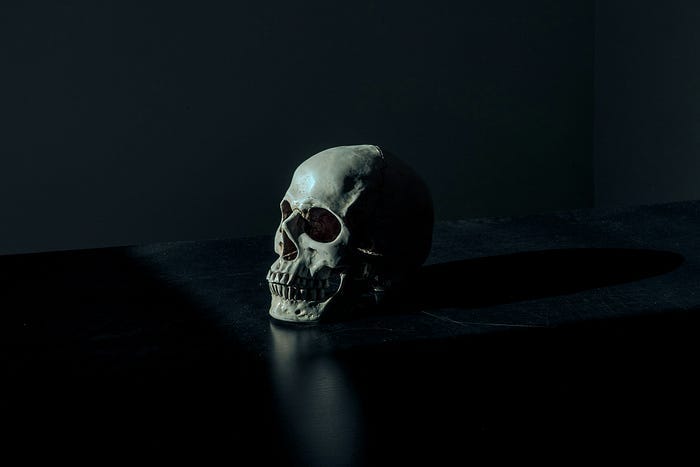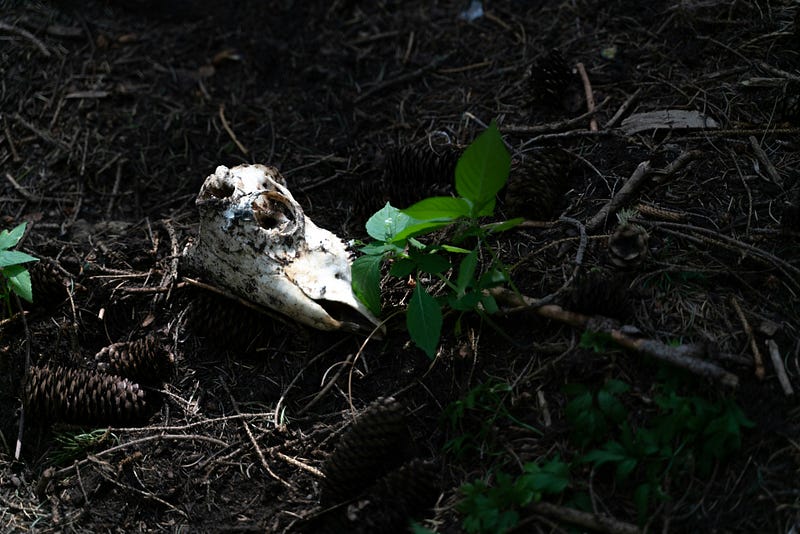# The Impact of Lifestyle on Post-Mortem Decomposition
Written on
Understanding Post-Mortem Decomposition
Have you ever wondered if your lifestyle influences how your body decomposes after death? Research indicates that the decomposition process can vary significantly among different organisms.

Photo by Mathew MacQuarrie on Unsplash
The term "microbiome" has gained significant attention recently, highlighting the importance of the diverse microorganisms that inhabit our bodies and their role in maintaining our health. This leads to intriguing questions: What happens to our microbiota once we pass away? Do individuals in good health decompose differently from those who are less healthy?
While these questions may not cross your mind often, they certainly piqued the interest of researchers. As a paleoanthropologist, I'm particularly keen on understanding how these variations can provide insights into ancient human communities as evidenced in the fossil record.
Curious to learn more? Let's delve into the foundational concepts to enhance our understanding of this topic.
The Role of Taphonomy in Paleontology
One of the essential fields in paleontology is taphonomy, which investigates the processes that occur before and after an organism becomes fossilized. This includes understanding how an organism decomposes, what happens to its remains, and the factors that contribute to its fossilization.
Numerous events can affect organisms post-mortem, which is why it's rare to find complete skeletons; the conditions needed for such preservation are as infrequent as winning the lottery!
But back to our main inquiry: What occurs with our microbiota after we die?

Source: National Human Genome Research Institute
Decomposition Dynamics
Upon death, an organism's body begins to break down, with various components disintegrating at different rates. For instance, internal organs like the brain and heart typically decay faster than reproductive organs.
Environmental conditions significantly influence the preservation and breakdown of organic matter. For example, a less extreme pH can slow down the decomposition process. Similarly, if a body is submerged in water, heat disperses quickly, also delaying decay.

This mammal skull (possibly a beaver) illustrates various taphonomic processes that affect decomposition, even before burial.
Initially, post-mortem changes start as body temperature aligns with the surrounding environment, ceasing all enzymatic activity. Autolytic enzymes, which break down cell structures, become active after death, leading to cellular degradation.
Rigor mortis typically begins soon after death, resulting in muscle stiffness as energy molecules deplete. After 24 hours, the body becomes rigid, but this rigidity eventually subsides as cellular decay accelerates, often linked to putrefaction and anaerobic microbes.
Gaseous compounds such as carbon dioxide and methane form inside the body over the following weeks, causing various tissues to swell and eventually liquefy.

Decomposition stages illustrated. Credit by Wikimedia Commons
The Transformation of the Microbiome After Death
The microbiome plays a vital role in regulating health. Immediately after death, the bacterial community remains stable for the first two days before undergoing significant changes in various anatomical areas.
A study led by Dr. Pechal and colleagues examined 188 deceased individuals with varying demographics and health statuses. Surprisingly, the bacterial behavior mirrored the health of the deceased; those with healthier, more diverse microbiota exhibited distinct decomposition patterns compared to their less healthy counterparts.

The study revealed that anatomical location significantly influences the microbiome's variations after death. While the migration of bacteria to other sites is limited (excluding the rectum), bacterial diversity tends to decline with time, correlating with the decomposition process.
Different bacterial species exhibit varying behaviors; for instance, Bacteroidetes and Actinobacteria decrease during decomposition, while Proteobacteria tend to increase across anatomical sites. Notably, Streptococcus and Staphylococcus maintain relative stability for the initial two days, with some samples indicating increased abundance in the mouth and eyes.

The implications of these findings are significant for understanding health conditions prior to death. Post-mortem microbiome analysis can provide valuable insights into the deceased's health and assist in reconstructing the lives of ancient populations.
Video: Death and Decomposition
This video explores the stages of decomposition and how various factors influence the process.
Video: What Happens to Your Body When You Die
Gain insights into the biological processes that occur following death and the role of the microbiome.
In summary, understanding the anatomical sites of bacteria can provide crucial information about the health of deceased individuals, serving as a potent epidemiological tool. This methodology may also help us piece together the health and lifestyles of both ancient humans and animals.
Published in Fossils et al. Follow to discover more about Paleontology and Evolution.